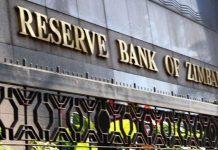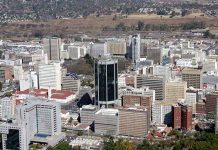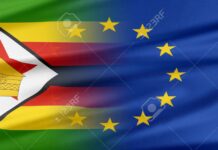FinX
HARARE – One of the essential requirements for a fast-growing modern economy is an adequate supply of electricity, and a supply that is expanding as fast as the economy is growing. This needs careful planning considering the long lead times for most power station projects, but it is quite possible. When China was pushing its economy towards 10% a year with much of the expansion in energy-greedy heavy industry, it was commissioning a new large coal-fired thermal station every two weeks. At the same time, Zimbabwe was also generating a lot of hot air. 888 sports
The country, regrettably was involved in endless debate. Instead of investing in new power stations it went 31 years between 1987 and the commissioning of Hwange Thermal unit 6 and 2018 before commissioning the Kariba South extension. Those wasted years are now haunting the entire economy. اون لاين العاب It is not just the fault of the Government and Zesa. Consumers, including large industrial consumers, have to take part of the blame with their total opposition to paying the required tariffs having grown up on the very cheap hydropower of Kariba in the 1960s and 1970s and seeing no reason to pay up to 10 times as much in real terms. Now they are paying more than 20 times as much in real terms using private generators.
Part of the problem is the infamous Mertz and McLellan Engineering Consultants reports of the early 1980s. These were the same British consultants who had a major say in how Hwange Thermal was developed and missed the fact that the cooling water at the station was going to be hot and so less effective. That is why although Hwange is rated at 920MW, it has never gone above 850MW, and that only happened on a very cold early morning one July when everything still worked.
The other part of MertZ and McLellan that has caused so much heartache over the decades was their error in assuming the Zambezi River flows of the 1970s, far above historical and later levels, were permanent and so recommending that Kariba South should be extended “as there was enough water”. The low capital cost of that extension, compared to other options, has enticed policy makers ever since and contributed to Zesa’s wishful thinking, that everything will be all right on the night.
There are good arguments for Kariba South Extension, but as everyone involved on the Zimbabwean side recognised in the 1980s, this project only made sense once Hwange had been taken up to at least 1 300 MW and the proposed thermal in the north Midlands of 1 200MW had been built. With ordinary demand met by thermal, then a larger Kariba South station could and should be used to cope with peak power demands, running on just a couple of generators most of the time but able to use the bulk of its daily water ration for a few hours a day going flat out to ensure no load shedding and no black outs.
A breathing space was created in the 1990s by the commissioning of a pair of giant 4500MW air-cooled thermals in South Africa while older stations were still viable and the re-organisation of Zambia’s Kafue and Kariba capacity. This created a respectable generating surplus in Southern Africa and allowed Zimbabwe to join Botswana and Namibia as significant importers at rates that were below the cost recovery rates needed by spectacular new investment. The long-term gain from that period is the Southern Africa Power Pool and the high level of interconnection between the national grids, allowing a far more efficient use of capital investments and an ability to recover from serious faults far more quickly.
Hwange Thermal was slated for expansion starting at around 2000 with the two new units coming on stream three years later and restoring Zimbabwe to near self-sufficiency. At the same time legal changes were made allowing private power stations with contracts to sell to Zesa. This would reduce the capital investment required by Zesa but would produce blocks of higher priced energy since the private investors would be in the business for money, not as a community service. However market forces using imports and hard negotiations would have limited returns on investment to fair levels. The big expected project would have been the Rio Tinto station of 1 200MW in two stages of 600MW. If Hwange had been extended on time, and the Rio Tinto Station built, right now Zimbabwe would be in clover and could perhaps even be selling peak power to South Africa at high prices.
While there was planning on this thermal expansion, the lure of hydro was shining bright. The Zambezi is a big river and flows through a succession of gorges that provide dam sites. It also has a huge difference between the annual high flow and low flow levels, and occasional drought in its main catchment in Eastern Angola and western Zambia provide their own problems. Basically large storage lakes are required but only one site, Kariba Gorge, actually creates a seriously large lake. The others dams impound far less storage. This was not a problem with the original engineering solution at Mupata Gorge downstream of Kariba. Basically what flowed out of the Kariba power stations each day could flow out of the Mupata stations a week or two later. Environmental considerations killed that scheme and Batoka got the nod.
This still required Kariba to have the storage, but downstream. روليت اونلاين The solution was to have very large power stations at Batoka and enlarge the Kariba stations. When the river was in flood Batoka would go flat out while Kariba would be throttled down and the water levels in the storage lake would rise fast. As Zambezi flows eased, Batoka would cut back and Kariba stations would start running down their stored water. That 1200MW on each bank of the Zambezi at Batoka fills all the public relations handouts. But it would only be that for a couple of months a year and at that time the Kariba station would be running at about a third maximum. If we had built Batoka a few years ago we would not be okay with 1200MW. With present flows, maybe we would have 100MW, and still be sitting in the dark. That’s why smarter planners were so keen on the thermals to take the base loads.
Other factors came into play. The economic smash of hyper-inflation cut the need to add capacity. The multicurrency regime, which made industrial investment so dodgy (it was easier to import than to make stuff) again delayed the decision day. At the same, Zesa’s uneconomic tariffs and poor management meant maintenance at Hwange, which might have required new boilers at the very least and perhaps new turbines and generators a bit later, was skimped and the overhauls neglected. This is one reason why it runs at such a present low output. People who say it is old are right, but Kariba is more than 20 years older; the big difference that almost nothing installed at Kariba in 1960 is still there. It has all been replaced over the years.
The final bad decision was the result of advice to extend Kariba South before fixing and extending Hwange. Sure the Kariba project was just over a third of the price, but, as we have discovered this year, without the back-up of a large thermal capacity, hydro can be less wonderful than optimists expect. If we had done the projects the other way round we would now have around 600MW to 800MW extra on the grid. Peak power cuts might still be needed for a few hours a day but nothing really exciting, just a modest nuisance.
Thanks to all the hot air, missed chances and wrong decisions, Zimbabwe now has to invest in less than a decade three decades of work. We need the Hwange extension and the older parts fixed and that we have started. We need the Sengwa thermal station, regardless of who builds it; and we need solar.
Our hydro investment and the Kariba South extension will really work for their living, even in a drought year like this year, if there is plenty of solar on the grid. Solar’s problem is there’s no power when there is no sun; you need a battery. And we have the biggest in the world, Lake Kariba coupled with an oversized Kariba South. Even in drought year it works. During the day Kariba is cut to a trickle and the sun fills the grid. As the sun sets the daily ration of water is shunted through the large hydro station in just 13 hours.
Even more importantly we have to stop talking about power and start acting. Events of this year have shown that the careful types were right; wishful thinking leaves Zimbabwe in the dark. But the realistic types can easily sequence the required investments, and sequence them in such a way that although tariffs must rise quite a lot, the rises will be the minimum to make a light switch work. Feedback email – [email protected]










